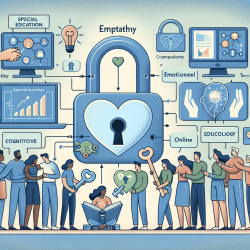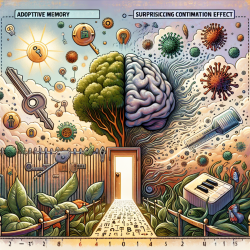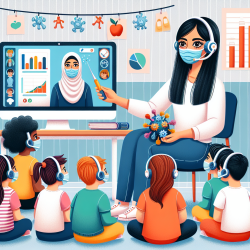In the ever-evolving field of special education, the ability to connect empathetically with students can make a world of difference. As a practitioner, you may wonder how to refine your empathic skills to provide better support and foster stronger relationships with your students. Recent research offers a treasure trove of insights that can help you enhance your empathetic interactions and ensure sustainable, reliable outcomes.
Why Empathy Matters in Special Education
Empathy plays a crucial role in human interactions, especially in educational settings where understanding and responding to students' emotional needs can significantly impact their learning experiences. The research article titled Empathic and Empathetic Systematic Review to Standardize the Development of Reliable and Sustainable Empathic Systems delves into the latest advancements in empathic interactions and behavior. Here’s how you can leverage these findings to improve your practice.
Key Takeaways from the Research
The systematic review provides comprehensive insights into the design, implementation, and evaluation of empathic systems. Here are some key points you can apply to your practice:
- Multi-Modal Detection and Response: Empathic systems are most effective when they incorporate both verbal and nonverbal cues. As a practitioner, you can enhance your empathic skills by paying attention to students' facial expressions, body language, and vocal tones, alongside their words.
- Contextual Understanding: Understanding the context of a student's emotions is crucial. Empathic systems are designed to detect and adapt to various emotional contexts. In practice, this means being attuned to the specific circumstances that may affect a student's emotional state and adjusting your responses accordingly.
- Behavioral Adaptability: Empathic systems adapt their behavior based on the detected context. As a therapist, you can apply this by using different communication strategies and interventions depending on the student's needs and emotional state.
- Quantitative and Qualitative Assessment: Evaluating empathy through both quantitative and qualitative measures is essential for improving empathic interactions. Regularly assess your empathetic responses and seek feedback from students and colleagues to refine your approach.
Practical Applications for Therapists
Here are some practical ways to implement these findings in your daily interactions with students:
- Use Technology: Leverage online therapy platforms like TinyEYE that incorporate empathic systems to better understand and respond to students' needs.
- Training and Development: Attend webinars, conferences, and training sessions focused on empathy and affective computing to stay updated on the latest advancements and best practices.
- Collaborative Approach: Work closely with parents, teachers, and other therapists to create a supportive network that fosters empathetic interactions and enhances student outcomes.
- Self-Reflection: Regularly reflect on your interactions with students and seek constructive feedback to continually improve your empathic skills.
By integrating these research-based insights into your practice, you can significantly enhance your ability to connect with and support your students. Empathy is not just a skill but a powerful tool that can transform the educational experience for both students and practitioners.
To read the original research paper, please follow this link: Empathic and Empathetic Systematic Review to Standardize the Development of Reliable and Sustainable Empathic Systems.










